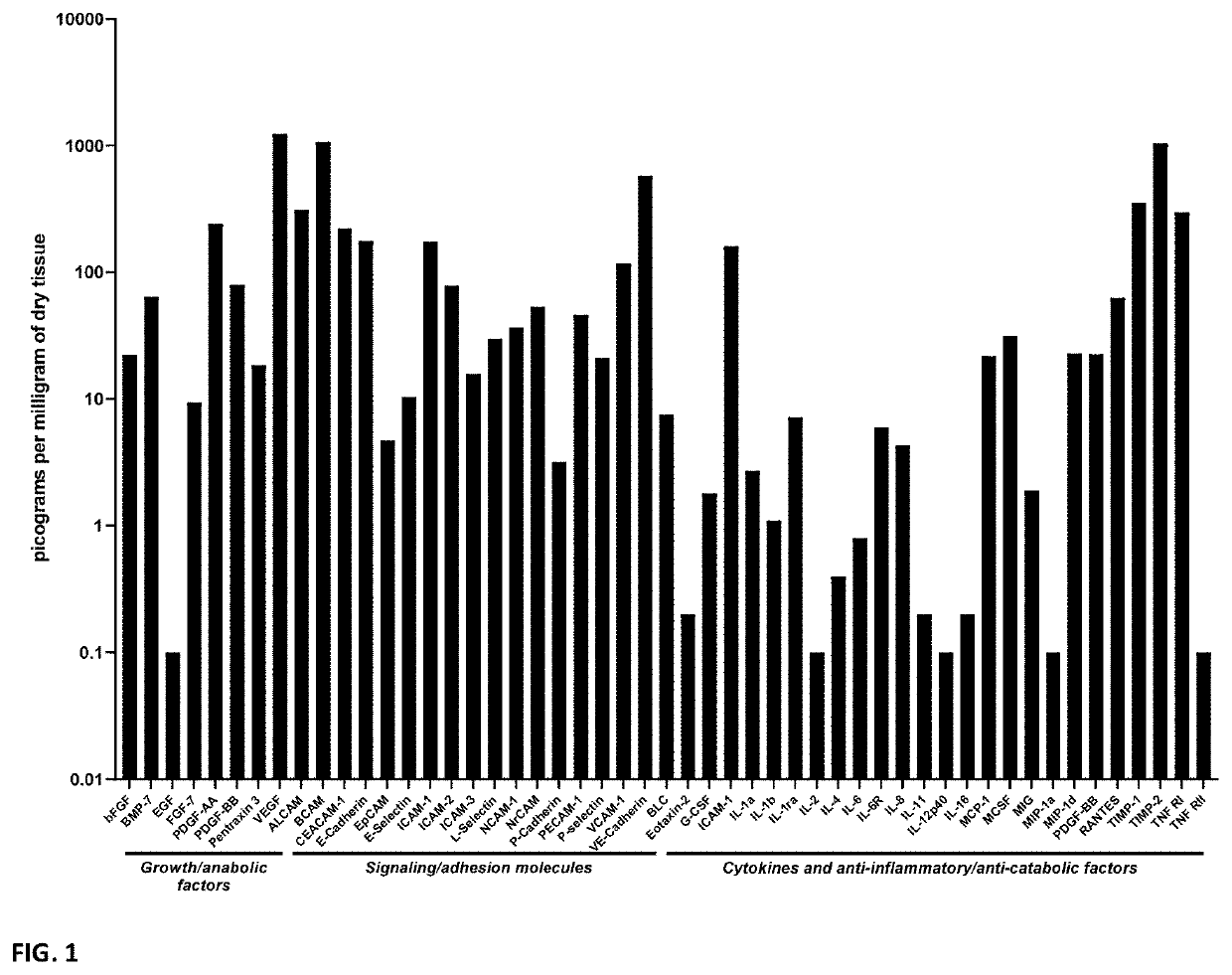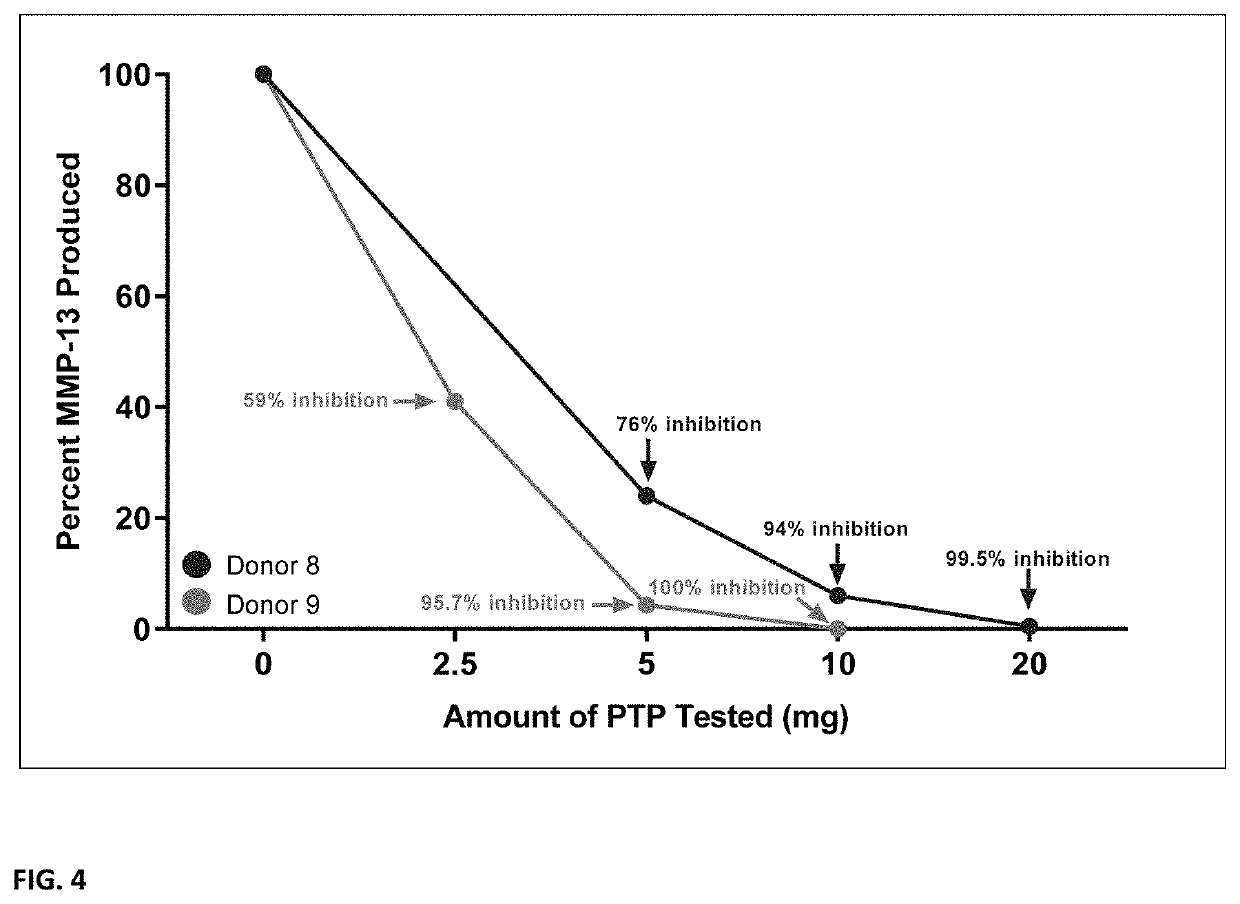Placental Tissue Particulate Compositions and Methods of Use
- Summary
- Abstract
- Description
- Claims
- Application Information
AI Technical Summary
Benefits of technology
Problems solved by technology
Method used
Image
Examples
example 1
[0078]PTP Composition Preparation
[0079]Each of 11 lots of the PTP compositions was derived from placental tissue from a single donor. Prior to processing, donated placental tissue was aseptically recovered from a live Caesarian birth, transferred to an FDA-registered tissue establishment, placed into quarantine and donor information was entered into a database for tissue tracking.
[0080]Donor placental tissue processing was initiated within 72 hours from the time of recovery. Prior to processing, tissue was inspected and an incoming bioburden sample was collected. The donated placental tissue was then separated (i.e., amnion, chorion, and umbilical cord, which was measured at time of acquisition and later dissected to remove blood vessels), cleaned to remove blood clots, rinsed with phosphate buffered saline (3-5 minutes per rinse at room temperature), cut into smaller pieces, e.g., 4 cm strips and lyophilized. Following lyophilization, the tissue was cut again to facilitate cryogeni...
example 2
[0081]Protein Analyses of Growth Factor / Cytokine Content
[0082]Protein multiplex analyses were performed on PTP samples using a custom Quantibody® Array to assess for the presence of unique pro-anabolic, inflammatory and anti-catabolic / anti-inflammatory growth factors and cytokines. Samples of PTP were suspended in an enzymatic solution (0.2% w / v collagenase type I dissolved in phosphate buffered saline; 0.5ml per 10 mg dry weight of PTP) and incubated at 37° C. for 24 hours. After centrifugation the supernatants were collected and frozen at −80° C. and transferred on dry ice to RayBiotech ® Norcross, GA for Quantibody® multiplex analysis. Multiplex data derived from seven individual donors and samples yielded readily detectable levels of a range of pro-anabolic, anti-catabolic, and anti-inflammatory growth factors and cytokines (see FIG. 1 and FIG. 16). Data from a single donor are displayed in FIG. 1 while data from seven donors are displayed in FIG. 16.
[0083]Next, a select panel o...
example 3
[0086]In Vitro Cell-Based Analyses
[0087]Human chondrocyte bioassay: Articular chondrocytes from OA patients are used as a relevant model to test the effects of the PTP compositions on human osteoarthritic cartilage. Chondrocytes isolated from excised cartilage from OA patients undergoing knee replacement surgery were cultured as cell monolayers under basal or catabolic (e.g., addition of a matrikine fragment of fibronectin) conditions, and in the presence of eluates from PTP preparations (see below). Following the culture period, key outcome measures of cell viability, indicators of anabolic processes, and ECM catabolism were assessed.
[0088]Eluates from PTP preparations were prepared by incubating tissue samples in serum-free culture media for 48 hours. Chondrocyte pre-culture media was removed and replaced with the PTP eluates followed by a further 48 hour culture period until basal or catabolic conditions. Media samples were then analyzed by Western immunoblotting for the presence...
PUM
| Property | Measurement | Unit |
|---|---|---|
| Length | aaaaa | aaaaa |
| Time | aaaaa | aaaaa |
| Time | aaaaa | aaaaa |
Abstract
Description
Claims
Application Information
 Login to view more
Login to view more - R&D Engineer
- R&D Manager
- IP Professional
- Industry Leading Data Capabilities
- Powerful AI technology
- Patent DNA Extraction
Browse by: Latest US Patents, China's latest patents, Technical Efficacy Thesaurus, Application Domain, Technology Topic.
© 2024 PatSnap. All rights reserved.Legal|Privacy policy|Modern Slavery Act Transparency Statement|Sitemap



